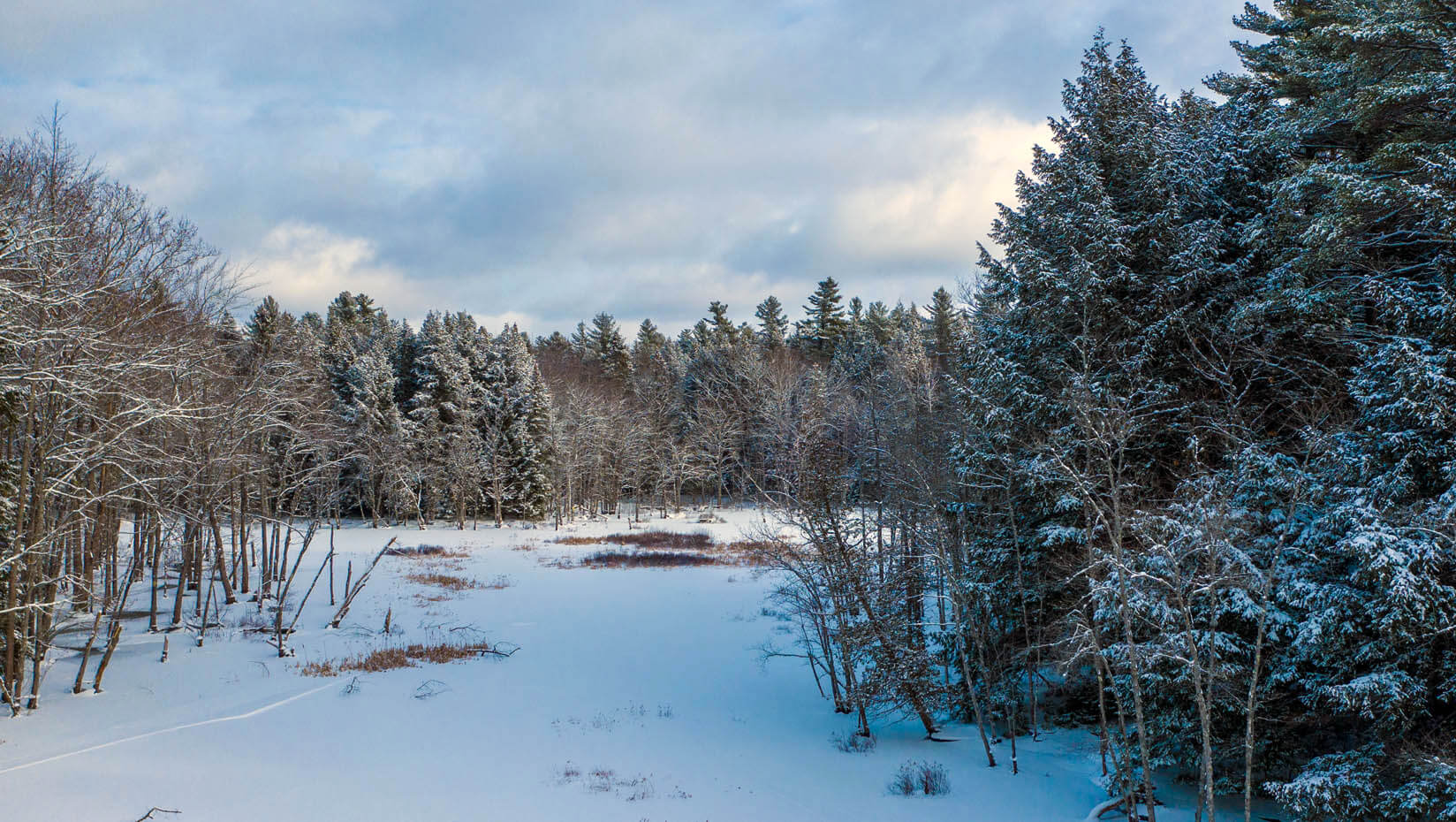
Ticks can survive cold winter temperatures in the right conditions, UMaine research finds
Winter cold may not be what’s keeping ticks from spreading north in Maine, a new University of Maine study finds. The research shows that blacklegged tick nymphs are able to survive inhospitably cold winter temperatures with insulation from leaf litter and snow pack, which may lead to an expansion of their range into northern Maine as climate change leads to warmer and wetter winters.
In the past few decades, ticks have expanded in both population size and range throughout the state of Maine. Nymphal and adult blacklegged ticks are of particular public health significance as they transmit a diverse array of pathogens, including the bacteria that causes Lyme disease.
Northern Maine has been considered a safe haven, though, with low tick population density compared to other parts of the state. Previously, scientists assumed that this is due to the freezing winter temperatures in northern areas of the state. As climate change brings warmer winters to northern Maine, it has also brought anxiety about whether ticks will soon settle there and cause the myriad public health concerns that they have in other parts of the state.
“Conventional wisdom is that cold winter temperatures kill ticks, but this rarely has been tested experimentally in the field,” says Allison Gardner, assistant professor of arthropod vector biology and co-author of the study, published in the journal Ticks and Tick-borne Diseases. “We designed our study to test the hypothesis that insulation protects ticks from the most extreme ambient temperatures, potentially enabling blacklegged ticks to survive even in the coldest parts of the state.”
A team of researchers from the University of Maine School of Biology and Ecology, the University of Maine at Presque Isle and the Vector-Borne Disease Laboratory at the Maine Medical Center Research Institute set out to see whether the cold was to blame for the current low concentration of black-legged ticks in northern Maine when compared to the coastal southern and inland central areas of the state. The study was led by Michelle Volk, at the time a master’s student in the Department of Ecology and Environmental Sciences, now a Ph.D. student at Michigan State University.
The researchers established enclosures from one-gallon plastic buckets containing blacklegged tick nymphs at four sites across Maine that were chosen to span the state’s full temperature and snowfall gradients: Cape Elizabeth, Orono, Brownville and Presque Isle. From 2018–20, the scientists observed whether the tick nymphs were able to survive the winter, ensuring that some of the subjects’ enclosures were covered in snow or leaf litter as they often are in the wild while others were cleared.
The results showed that overwinter survival was consistent across the sites — even in northern Maine. Snow and leaf litter cover contributed significantly to the overwinter survival at sites in both southern and northern Maine.
In 2019, the scientists also collected host-seeking blacklegged ticks at seven sites across Maine to compare their experimental results to real-world conditions. They found higher densities of blacklegged ticks in coastal and southern Maine than inland central Maine — and, perhaps most importantly, no blacklegged ticks in inland northern Maine.
“The findings of this study suggest that the impact of low temperatures on overwinter survival may not be the single factor limiting blacklegged tick populations in northern Maine,” Gardner says. “While climate change likely has some role in the geographic range expansion of ticks in the state, the ecological mechanisms limiting the spread of the blacklegged tick likely are very complex.”
The disparity shows that extremely cold winter temperatures doesn’t prevent ticks from overwintering in northern Maine as long as there is significant insulation in the form of leaf litter and snowfall. On a small scale, manipulating the availability of insulation at different sites, though — for example, reducing leaf litter or snow cover through the fall and winter — could help manage tick populations in Maine. However, as climate change is expected to both increase northern winter temperatures and precipitation in the northeastern United States, the future of blacklegged tick populations in the region will have to be even more closely tracked.
“The goal of our ongoing work is to conduct more detailed studies of how abiotic conditions impact tick survival in the environment. Right now, my group is attempting to understand the role of temperature variance as opposed to temperature extremes on tick survival,” Gardner says.
Contact: Sam Schipani, samantha.schipani@maine.edu
